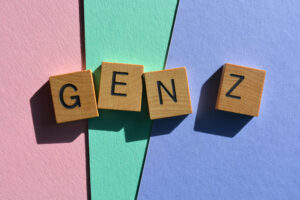
How Group Schema Therapy Helps Gay Men
How Group Schema Therapy Helps Gay Men. Living in a big city like New York can be exciting and challenging. The fast-paced lifestyle, bright lights, and constant stimulation can make it easy to get caught up in our thoughts and emotions. For gay men in New York City, this can be especially true. Whether it’s the pressure to fit in with the LGBTQ+ community, the constant search for acceptance and validation, or the stress of living in a big city, finding a sense of peace and contentment can be hard.
Social Exclusion Effects on Gay Men
One of the most common issues gay men in New York City face is what schema therapy terms, “social exclusion,” the process of being excluded from social groups and activities that can lead to feelings of isolation and loneliness. For gay men, social exclusion can be especially prevalent due to discrimination and prejudice that still exists in society.
Group schema therapy can be one of the most effective ways for gay men in New York City to address social exclusion issues. Schema therapy is designed to help individuals overcome longstanding patterns of negative thinking, feeling, and acting that have been developed over their lifetime. The therapy is based on the idea that our thoughts, feelings, and behaviors are interconnected and that our past experiences can significantly impact how we view ourselves and the world around us.
Group schema therapy, similar to group cognitive behavioral therapy, is a relatively new and unique kind of group therapy for men that is intended to assist gay men through GayCouplesTherapy.com in overcoming old patterns of negative thinking, feeling, and behavior developed during their life experiences. Schema therapy is founded on the notion that our ideas, emotions, and actions are all interrelated and that our past experiences may substantially influence how we see ourselves and the world around us now.
According to schema therapy, we create “schemas,” or patterns of thinking and acting, that are activated by certain situations or events. These schemas originate in childhood and are based on traumatic, unpleasant, or emotionally charged events. For example, if a kid was neglected or abandoned, they may develop an abandonment schema that is activated anytime they feel rejected or alone.
Group schema therapy for men is a dynamic and engaging style of treatment that aims to assist individuals in identifying and changing harmful schemas. At GayCouplesTherapy.com, the group for men is led by Travis Atkinson, the Director of Loving at Your Best, a skilled therapist who has led groups for nearly three decades. Group schema therapy invites members to learn from one another while also providing support and encouragement to each other.

The use of “experiential approaches” to help members interact with and comprehend their schemas on a deeper level is a crucial component of group schema therapy. Role-playing, visualization, and other strategies that allow group members to experience their schemas in a safe and controlled context are examples of these techniques.
Cognitive approaches, such as cognitive restructuring, are also used in group schema therapy to help group members identify and challenge harmful attitudes and beliefs related to their schemas. Furthermore, the therapy incorporates behavioral strategies like exposure therapy, which allows group members to address their fears and anxieties in a secure and controlled atmosphere online using our video platform.
Individuals who have experienced significant or long-term trauma, such as childhood abuse or neglect, may benefit most from group schema therapy. It can also help people who suffer from depression, anxiety, or personality problems.
One of the advantages of group schema therapy is that it creates a secure and supportive setting in which people may express their thoughts and feelings. This is especially crucial for trauma survivors because it might be difficult to open up and trust people. The treatment can create a sense of community and connection for those who have been lonely or alone for an extended period.
Another advantage of group schema therapy is that it may help people learn how to build good connections. Individuals can benefit from counseling by learning to communicate more effectively, set boundaries, and resolve disagreements. It can also assist individuals in learning how to form and maintain good relationships, which is an essential component of overall well-being.
It’s also worth noting that group schema therapy can help with various other mental health problems. Individuals suffering from anxiety or depression, for example, might benefit from the therapy, as can people who struggle with social relations, anger control, and other concerns.
Group schema therapy is a beneficial tool for those who have endured severe or protracted trauma or are dealing with difficulties like depression, anxiety, or personality disorders. It provides a secure and supportive atmosphere for people to express their thoughts and feelings and may teach people how to form healthy connections. Group schema therapy can improve an individual’s overall well-being by addressing negative schemas and thinking and behavior patterns. Consider group schema therapy if you are battling with prolonged patterns of negative thoughts, feelings, and actions.
The emphasis on navigating emotions is another significant feature of group schema therapy. Individuals who have acquired negative schemas frequently struggle with emotion regulation and may have severe emotional reactions in response to schema-related events. Members of group schema therapy learn how to recognize and control their emotions in group schema therapy, which can help them cope with the triggers associated with their schemas.
Self-compassion and self-acceptance are also heavily emphasized in group schema therapy. Many people with negative schemas may be self-critical and harsh on themselves. Men who participate in group schema therapy can establish a more compassionate and understanding connection with themselves, which can help them manage the unpleasant ideas and feelings related to their schemas.
The application of mindfulness practices is another key part of group schema therapy. The discipline of being present and completely involved in the present moment without judgment is known as mindfulness. This is especially beneficial for those with negative schemas because it allows them to focus on the now rather than getting caught up in unpleasant thoughts and feelings about the past or future. Mindfulness practices can also help people improve their emotional regulation and establish a more compassionate and understanding relationship with themselves.
It’s also worth noting that group schema therapy is a somewhat long-term kind of therapy, requiring several months to more than a year. This is because tackling persistent patterns of negative thoughts, feelings, and behaviors can take time, and people will need to work through their schemas in a safe and controlled setting.
Group schema therapy is a vital and novel type of treatment that can assist members in breaking free from long-held patterns of negative thinking, emotion, and behavior. It provides a secure and supportive atmosphere for people to express their thoughts and feelings and may teach people how to form healthy connections. Emotional control, self-compassion, and self-acceptance, and mindfulness methods are all heavily emphasized in the therapy. Consider group schema therapy if you are battling with prolonged patterns of negative thoughts, feelings, and actions. It is a long-term therapy, but the advantages can be life-changing.
GayCouplesTherapy.com uses both Cognitive behavior therapy (CBT) and schema therapy as the foundations for group therapy for men. Both models are types of psychotherapy that aim to help people break bad habits of thinking, feeling, and behaving. Both treatments are founded on the premise that our ideas, feelings, and behaviors are all interrelated and that our past experiences substantially influence how we see ourselves and the world around us. However, some significant distinctions between the two therapies should be highlighted.
The primary goal of cognitive behavior therapy is to recognize and alter harmful ideas and beliefs. This is achieved through strategies like cognitive restructuring, which assists people in identifying and challenging harmful attitudes and beliefs. CBT also involves behavioral strategies like exposure therapy, which allows people to address their fears and anxieties in a safe and controlled setting. CBT’s purpose is to teach people new ways of thinking and doing that will improve their overall well-being.
Schema therapy, on the other hand, is concerned with recognizing and modifying negative patterns of thinking, feeling, and behavior that have emerged over the course of a person’s life. These chronic patterns, known as “schemas,” are activated by particular situations or experiences. Schema therapy incorporates cognitive restructuring and behavioral strategies. It also includes experiential techniques like role-playing, imagery, and other techniques that allow people to experience their schemas in a safe and controlled setting. Schema therapy aims to assist individuals in overcoming harmful schemas and thinking and behavior patterns that have been established through time.
- The duration of therapy is another significant distinction between the two regimens. Cognitive behavior therapy is usually completed within a few weeks or months. Schema therapy, on the other hand, is a relatively longer-term therapy that normally necessitates a commitment ranging from several months to more than a year. Changing long-standing patterns of negative thoughts, feelings, and behavior can take time, and people will need to work through their schemas in a safe and controlled setting.
Furthermore, compared to CBT, schema therapy focuses more on emotional regulation, self-compassion and self-acceptance, and mindfulness practices. Techniques in schema therapy also focus on creating healthy connections, which is not often emphasized in CBT.
Finally, cognitive behavior therapy and schema therapy are both types of psychotherapy founded on the premise that our thoughts, emotions, and actions are all interrelated and that our past experiences substantially influence how we see ourselves and the world around us. There are, however, some significant distinctions between the two regimens. CBT is primarily concerned with recognizing and modifying negative ideas and beliefs. In contrast, schema therapy is concerned with identifying and changing negative patterns of thinking, emotion, and behavior that have emerged over the course of our life. Compared to CBT, schema therapy is a longer-term treatment modality that focuses on emotional regulation, self-compassion and self-acceptance, and mindfulness practices. The requirements and history of the individual ultimately determine the length of treatment in group schema therapy. Both therapies can be beneficial, and your therapist, Travis Atkinson, at GayCouplesTherapy.com uses both modalities to help members of the men’s group feel better as quickly as possible while tackling chronic issues.

Travis is an Advanced Certified Schema Therapist, Supervisor and Trainer for Individuals and Couples. In addition, he is a Certified Gottman Method Couples Therapist and a Certified Emotionally Focused Couples Therapist and Supervisor. Travis became a Certified Group Psychotherapist from the American Group Psychotherapy Association and is a graduate of the Northeastern Group Psychotherapy Association foundations in group therapy program, along with the Eastern Group Psychotherapy Association’s program.





























